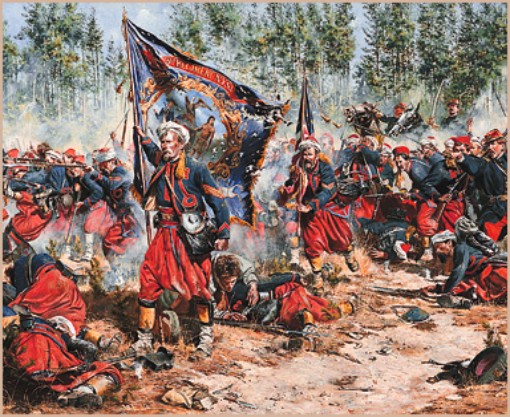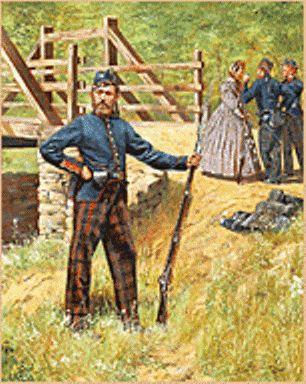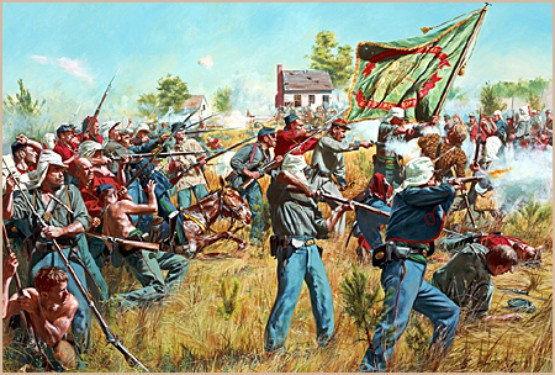


Early Confederate Uniforms
Early in the war, Confederate soldiers generally received their uniforms - if and when they had uniforms - from a variety of sources. There were many differences, depending on unit, location, time, and other variables.
Some companies had uniforms made up by the ladies at home, some units were issued militia uniforms by their states, and some commands had uniforms made up by local tailors. The Confederate government, especially in the Western theatre, didn't really get into the swing of making and issuing uniforms on a large scale until later in 1862. So you can see how early Confederate uniforms could have a great variety.
Until about December 1862 the Confederacy depended on the "commutation system" to clothe its troops. That is, each man was expected to supply his own clothing, for which he would be paid at a set rate. Obviously, this system didn't work, and the government quartermaster took over the making and issuing of uniforms. The commutation system left lots of Confederates serving in plain old civilian clothes and just parts of uniforms, through at least mid-1862, and especially in the West. Officers were only rarely issued uniforms (and usually much later in the war) they were paid on a scale to allow them to purchase their own.
Some units were very quickly uniformed, while others not so. Some men had pre-war militia uniforms, many (if not most) went to war in civilian clothes.
Gray vs. blue.....Early in the war this rule didn't apply. There were many Federal units that went to war wearing pre-war militia cadet gray (bluish gray), and many Confederate units wore dark blue early in the war (one Louisiana unit that went into action at Shiloh wearing blue coats took them off and turned them inside out, because they were taking friendly fire from their own forces).
“A man who has never been a soldier, does not know, nor indeed can know, the amount of comfort there is in a good soft hat."
These were the words written by one Southern private.
Hats provided soldiers with warmth in winters and shade in the summers, they offered some protection from rain, and served as a handy bag for carrying foraged eggs and blackberries.
The original 1858 foraged caps had a narrow leather visor and a high crown with a round, usually a perfectly flat, top that flopped forward at a sharp angle. The kepi was a French style forage cap with a lower crown and a top which tilted at a much smaller angle. Where the top of a forage cap was flat, a kepi usually had a raised roll around the outside of the round, or otherwise, flat, top.